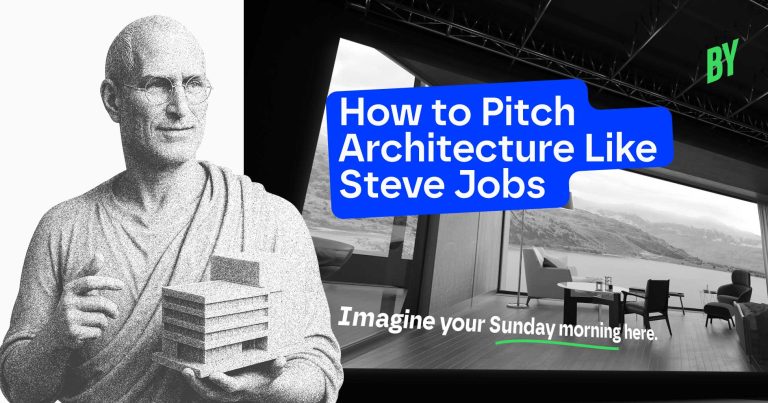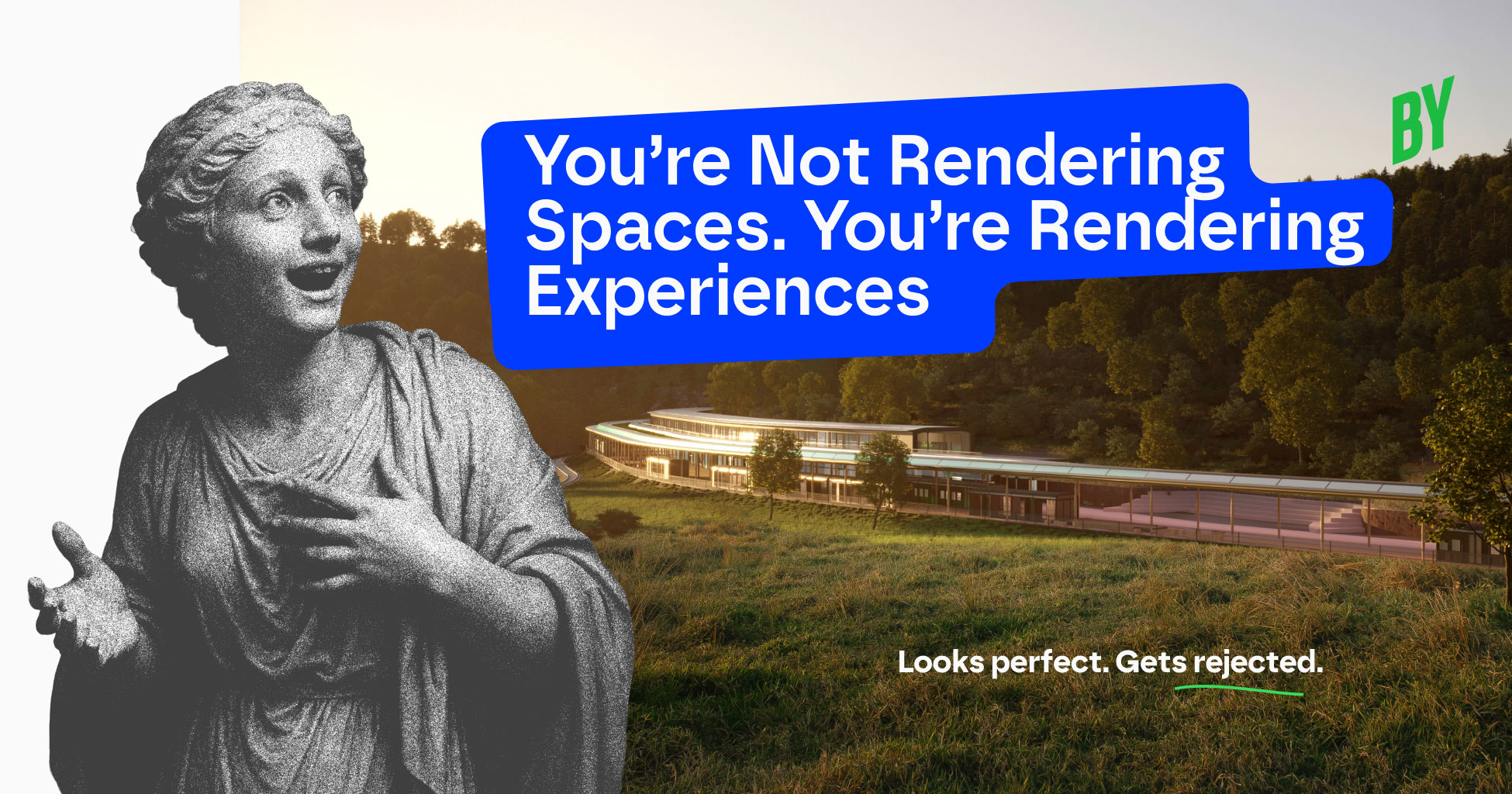What Most Designers Get Wrong About Rendering
Design school teaches you to present key features: entrances, circulation, material use, solar shading, all the practical elements.
But clients aren’t wired to care about logic first. They respond to emotion. They want to feel what it’s like to live, work, or gather in that space.
Here’s the problem: when you only render a structure, you show its function. When you render an experience, you sell its impact.
It’s the difference between this:
- A perfect view of the living room from three sides, with all finishes clearly visible.
And this:
- A soft beam of morning light kissing the dining table. A half-sipped espresso. An open book.
One shows the space. The other makes you want to be there.
The Cozy Bedroom Test: Why Imperfection Sells
Let’s say you’re pitching a bedroom design.
In Option A, everything’s flawless. The duvet is tucked tight. The curtains fall evenly. The floor is spotless.
In Option B, the bed looks just-used. There’s a soft throw draped over one side. A tray sits with coffee, half-full. A sliver of early morning sun slices through the blinds.
Which one feels real? Which one feels warm?
Clients are more likely to say yes to Option B. Because that’s the one that feels like a lived-in moment.
We call this the “Cozy Bedroom Test.” It’s a gut check: does your render feel like a photo taken from someone’s life? If not, it might look too good to be true.
And if it doesn’t feel believable, it won’t build trust.
The Building Blocks of Emotional Experience
So what actually makes a render feel like an experience?
1. Lighting as Emotion, Not Just Exposure
Lighting isn’t there to just reveal form. It sets the tone.
- Golden hour = warmth
- Rainy day = introspection
- Harsh midday = activity
Use light to sculpt mood.
2. Composition as Storytelling
How you frame a shot affects what it says.
- Low angle = grandeur
- Off-center = intimacy
- Depth of field = cinematic immersion
Every angle should say something.
3. Atmosphere & Time of Day
A space at 10am feels different than at 8pm. Add haze, sun flares, soft shadows. Use environment to evoke time and emotion.
4. Imperfection = Relatability
Too clean? Too symmetrical? Too polished? It looks fake. Add slight mess. A crooked chair. A used glass. These tiny cues build realism.
5. People, Pets, and Motion
A dog sleeping by the door. A person walking past a hallway. These subtle inclusions add soul and scale. Don’t render for the catalog. Render for the life inside.
From Moodboard to Moment: Translating Concepts Into Feeling
Moodboards are often packed with color swatches, inspiration shots, and material references.
But how do you go from that to a moment the client can feel?
A few tactics we use:
- Color theory: Warm vs cool tones signal comfort vs drama.
- Light sculpting: Treat light like a 3D object. Let it carve form.
- Environmental realism: Don’t just paste a stock image outside the window. Build a believable exterior scene that feels local and lived-in.
- Time mapping: Render the same space at different times of day. This tells the client, “Here’s how your space lives.”
When clients see the same room in soft dawn and golden dusk, they stop seeing it as a diagram. They start seeing it as their future.
Render Like a Filmmaker
Great directors know how to use space to tell emotion.
A filmmaker wouldn’t frame a shot just to show a kitchen. They’d frame it to show a moment:
- A parent making breakfast while a kid laughs at the table
- A moody late-night scene lit by a single overhead bulb
Apply the same logic to renders.
Your render should feel like a scene, not just a scan. You’re not documenting design. You’re directing mood.
Client Psychology: What They Really Respond To
We’ve seen it again and again: Clients respond to emotion more than information.
Sometimes they say nothing at first. Just silence. That’s when you know they’re immersed.
Other times, it’s the immediate “Wow.”
One of our favorite moments was showing a hotel suite render to a client. They were pleased. But when we later turned that same room into a Valentine’s Day scene—rose petals, moody lights, champagne on ice—they lit up.
“This is what we need for our campaign,” they said.
They weren’t just buying the room. They were buying the feeling.
The Mindset Shift: From Model to Magic
Want to make this shift in your own work? Start here:
- Don’t ask: “Does this show the design?”
- Ask: “Would I want to step into this scene?”
Every detail should support a story.
And that story should speak directly to how someone feels in the space: Safe. Inspired. Calm. Energized. Curious. Connected.
Because at the end of the day, clients don’t want to just see what a building looks like. They want to imagine their future inside it.




